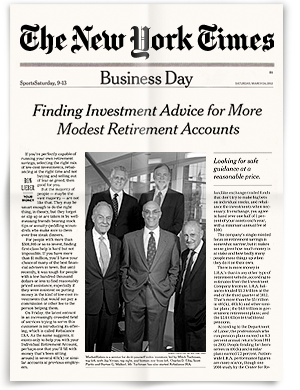
David Einhorn, the hedge fund guru best known for shorting Lehman Brothers in 2007, is back at it, this time with tech stocks in his sights. “There is a clear consensus that we are witnessing our second tech bubble in 15 years,” Einhorn’s $10.3 billion firm, Greenlight Capital, told clients in a letter this week.
The correction in tech stocks so far is hardly a shock. Tiny companies with negligible earnings were priced at unhealthy levels.
Inevitably, inflated valuations fell back to earth as traders cashed out and plowed money into dividend-payers and slower-moving blue chip stocks with actual revenues to report. That’s just what happens when our emotions drive our investments, rather than letting the ultimate goal — a steady, reliable return — dictate.
So why did investors put so much capital into unproven firms? That’s the nature of the beast, as Jason Zweig explains in The Wall Street Journal. We want a quick hit, a runaway winner that absolves us of all of our portfolio sins.
Unfortunately, as Zweig notes, stocks that rise quickly also tend to disappoint just as fast. In a market trading at 21 times earnings, Internet stocks were trading at 158 times earnings, he points out. Only a flashing red light would have been more obvious, although likely equally unheeded.
People ignore such signals because they don’t understand the math behind them. It’s really easy, however, and an important point to consider: If you buy a business at 10 times earnings, you are agreeing to wait a decade for those earnings to pay back the original investment.
Ice cream economics
Imagine you plan to buy an ice cream shop. You know the store generates $50,000 a year, after subtracting rent, labor, cost of ice cream and so on. The seller wants $300,000 to buy her store.
If nothing changes, you will wait six years to turn a profit. Maybe it’s worth the wait, or maybe you want to negotiate or even walk away. The point is, you know what you’re getting into in terms of risk.
That Internet company trading at more than 100 times earnings will never, ever pay you back in a meaningful way. You won’t live long enough, and the company itself will be overrun by competitors or go bust.
So what you trying to buy here, exactly? Really, you’re hoping a “greater fool” will come along and pay you now for the right to wait a century for those non-existent earnings to appear.
Zweig goes on to build a case for momentum investing, and it’s a fine argument to make — if you have 60 hours a week to trade the markets like David Einhorn. Most people saving for retirement barely have time to focus on career and family.
That’s the unfortunate illusion peddled by Wall Street, that ordinary people can and should be traders. There’s a commercial out now that shows doctors, waiters and tailors dancing around and singing about their great online trading service.
Does a doctor running from bedside to bedside have time to research and intelligently trade a single stock? A whole portfolio? Meanwhile, thousands of professional managers are working around the clock to do the same thing, gleefully waiting to trade against our busy doctor. It’s laughable.
Chain of fools
And that’s the reason Internet stocks blew up so radically. Wall Street marketing and the financial media are bent on creating herds of “greater fools” to buy into completely unrealistic stocks.
The result, naturally enough, is that people pressed for time don’t do the homework, don’t research the stocks they buy, don’t even look at P/E multiples and instead hop on the name and notoriety of one or two hot issues in hopes that the chain of fools is long enough for them to hop back off undamaged.
Zweig does counsel diversification, that is, owning a variety of stocks in order to avoid amplifying the negative effects or one or two big losers. But he does so in the context of active management, something a portfolio manager might do at a professional level, hand-picking value stocks to balance against a short-term flier on untested technology shares.
I’d go one step further. For the vast majority of retirement investors, the far better route is to own the whole market as part of a portfolio indexing strategy. Rebalancing — selling fast gainers as they climb to buy cheaper value stocks — happens painlessly at the index level.
I do love the idea of people dancing and singing about their investments, however. Emotions are great, so long as it’s happiness from seeing your portfolio grow into the retirement you expect and deserve.





